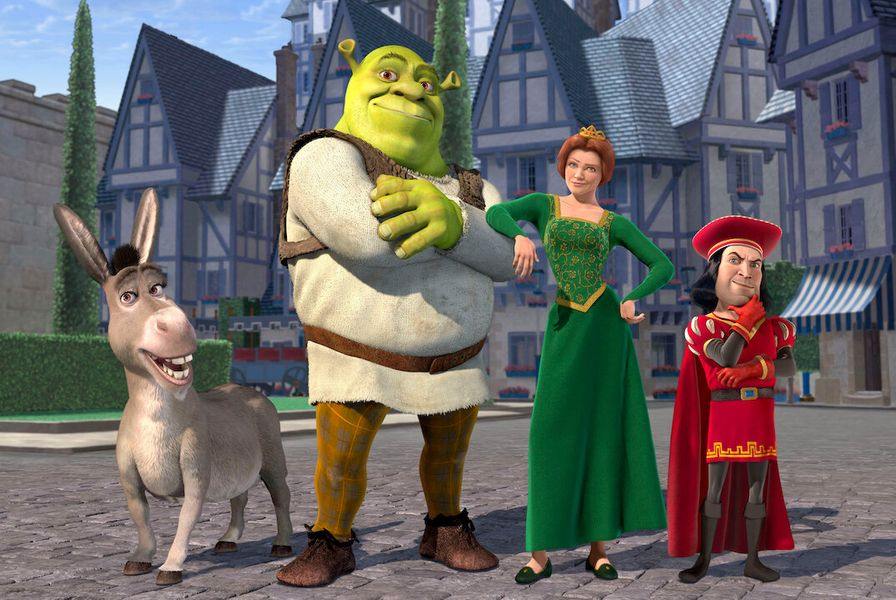After adding the entire franchise to their shelves, Netflix saw a massive spike in Shrek viewership as the audience simply could not get enough of the green ogre and his funny, loyal comrades as they fart and belch their way through this brilliant subversion of a modern fairytale. Loosely based on William Steig’s eponymous 1990 fairytale book, the franchise is a product of the then-newly-founded DreamWorks, and featured Mike Myers as Shrek, Eddie Murphy as Donkey and Cameron Diaz as Princess Fiona, the three main characters.
While it has been nearly two decades since the release of the first film way back in 2001, Shrek continues to attract the attention of kids and adults alike. The films revolve around the titular green ogre named Shrek who finds his swamp overrun by magical creatures who have been banished by the corrupt Lord Farquaad. With his loyal yet annoying companion, the chatterbox Donkey, Shrek embarks on a journey to rescue Princess Fiona whom Farquaad wishes to marry.
At the end of the quest, Shrek and Fiona fall in love. Fiona reveals her secret and with true love’s kiss regains her original form. After they get married, the duo encounter various obstacles in form of parental unacceptance and disapproval, former lovers, a furious fairy godmother and her coddled son as well as a conniving Rumpelstiltskin over the next few films, that make up the successful franchise.
However, Shrek‘s true impact and legacy are far deep-seated. Jeffrey Katzenberg quit Disney over creative differences with the then-CEO Michel Eisner. When he created Shrek, via animation and the narrative structure, he created the perfect antithesis to Disney, thus drawing immense acclaim and attraction, becoming the highest-grossing film of the decade and earning numerous awards, and accolades and prestigious nominations.
Till then, Disney was busy keeping up with the fairytale stereotypes. With films like Aladdin, Little Mermaid and Cinderella, Disney carved out a particular set of ideals for princesses: they were beautiful, delicate, charming and lovely songstresses. Everything was rosy and bright and the antagonists were vile, ugly and abhorrent. Every princess had their own version of prince charming, who in turn was extremely handsome with chiselled features but mostly no dialogue.
With Beauty and the Beast and The Princess and the Frog, Disney tried to establish the metamorphosis from ugly to beautiful: the Beast transformed into a handsome Prince while the latter saw the Prince turn into a Frog after true love’s kiss. While Disney tried hard to push forward the idea of falling in love with someone beyond their appearances, the execution was poor and they ended up reinforcing the stereotypes.
However, with his 2001 film Shrek, James Gunn upended all previous ideas about animated works and fairytales. With Shrek, the creators wanted to disrupt preconceived notions. It was a bold and audacious subversion of fairytale stereotypes that resonated with the audience.
Shrek is not a typical ogre. While ogres are painted in a negative light, Shrek is shown to be kind, compassionate and adorable. Often grumpy, he likes nothing better than isolating himself from the public, soaking up some mud in his godforsaken swamp and belching and farting as loudly as he can. Shrek meets his perfect match in Fiona. Even as a Princess, Fiona cannot sing, she is quite improper and fights Robin Hood and his army with extreme vigour, winning Shrek’s heart.
Although Fiona is desperate for true love’s kiss to retain her human form, she slowly lets go of the inhibitions and falls in love with the green ogre, retaining the form of an ogress. She does not betray Shrek and redefines the idea of finding love beyond one’s appearance. Amidst several inappropriate jokes, Shrek finds a perfect partner to fart with.
While the lead characters do not live up to the ideal beauty conventions, the antagonists in each film are relatively human, especially Prince Charming in Shrek The Third. Charming is nothing like his name; although he is a pleasant sight to the eyes, he is an absolute headache- entitled, selfish, crude and annoying.
The film treats every character with nonchalance and irreverence, even childhood favourites like Pinocchio and Puss in the Boots, making it appear even more fun and appealing. By presenting relatable characters albeit in a magical realm, the film touches a chord with the audience, something that the Disney fairytales cannot do as they seem to lack the ability to be grounded in reality.
